03 Mar 2022
Our defence engineers find meaning in tapping digital technologies innovatively and adopting green solutions to engineer a sustainable environment for MINDEF and the SAF.
In an effort to reduce carbon emissions, water consumption and electricity usage, a team of engineers from our Building and Infrastructure Programme Centre collaborated closely with the SAF Sustainability Office to implement various green initiatives.
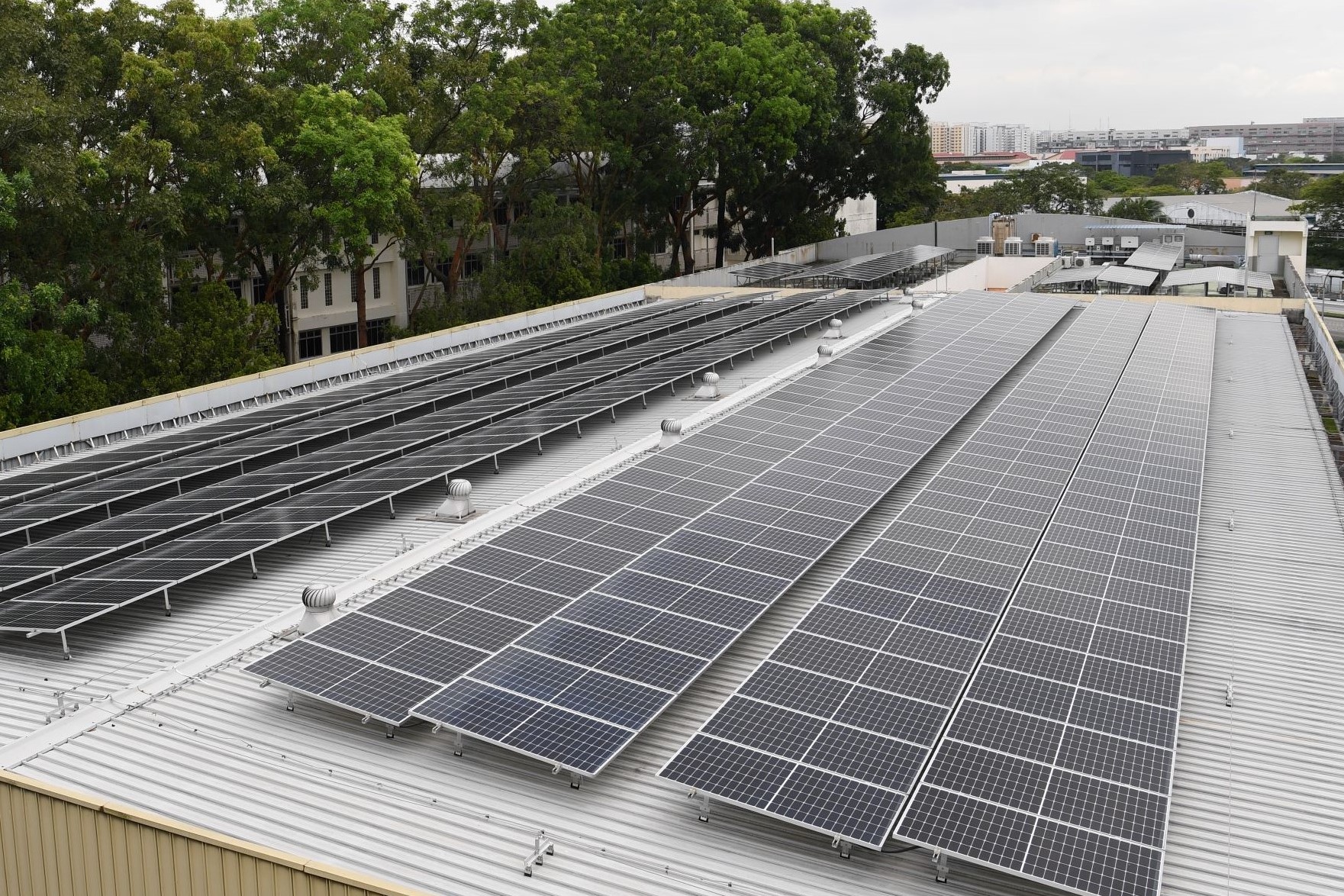
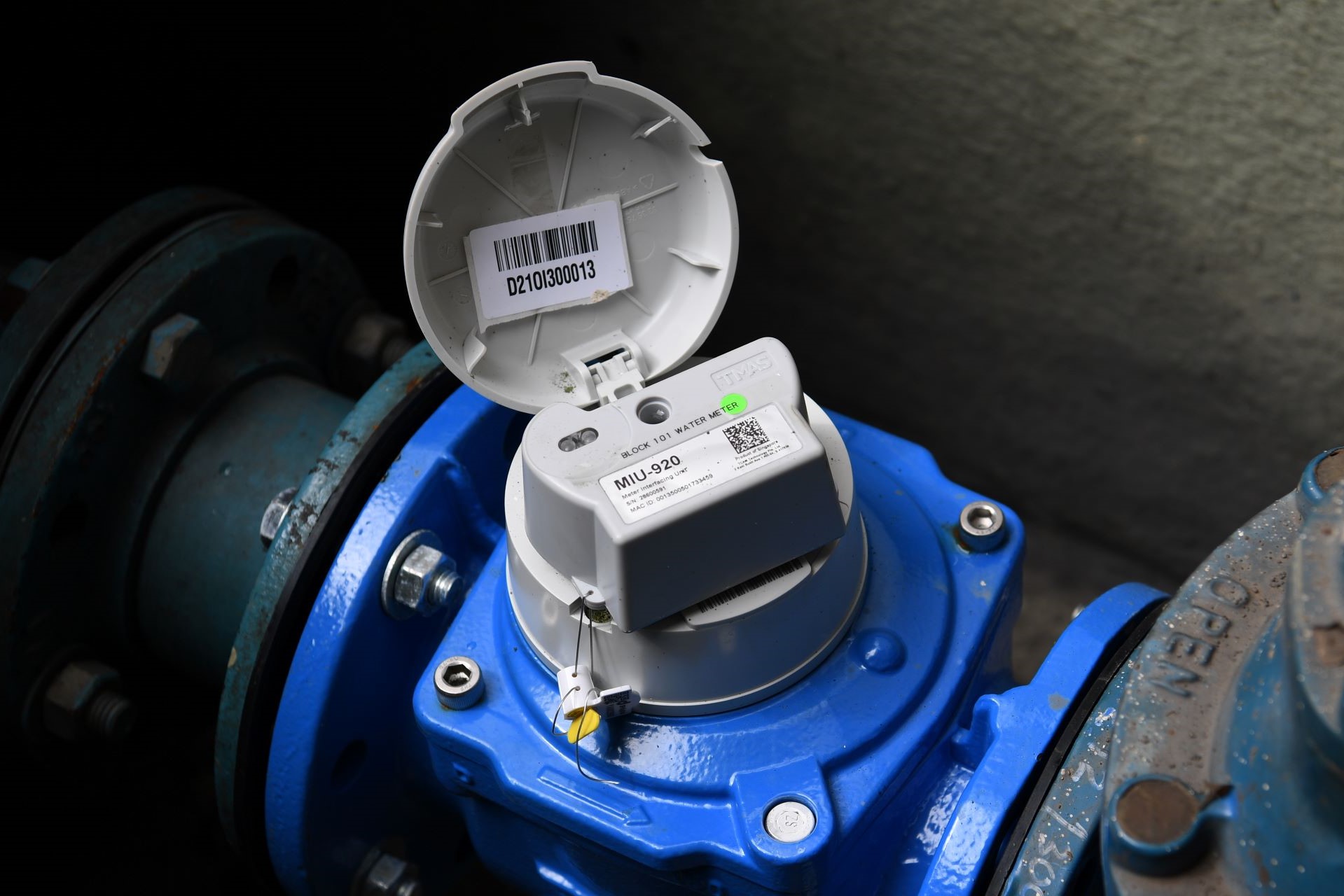
Solar panels are now a common sight on rooftops (left), and smart meters are also appearing in more places such as Jurong Camp (right).
As overall programme manager, our engineers oversaw the procurement approach, implementation and operationalisation of solar power systems across SAF camps to reduce carbon emissions.
Senior Engineer (Building and Infrastructure) Carmen Chia, who led the efforts, explained that this involved conducting extensive preliminary research such as site assessments and early feasibility studies.
“We wanted to understand and identify the most suitable buildings for installation, so that we could assess the solar potential and maximise the solar capacity across our SAF camps,” she said.
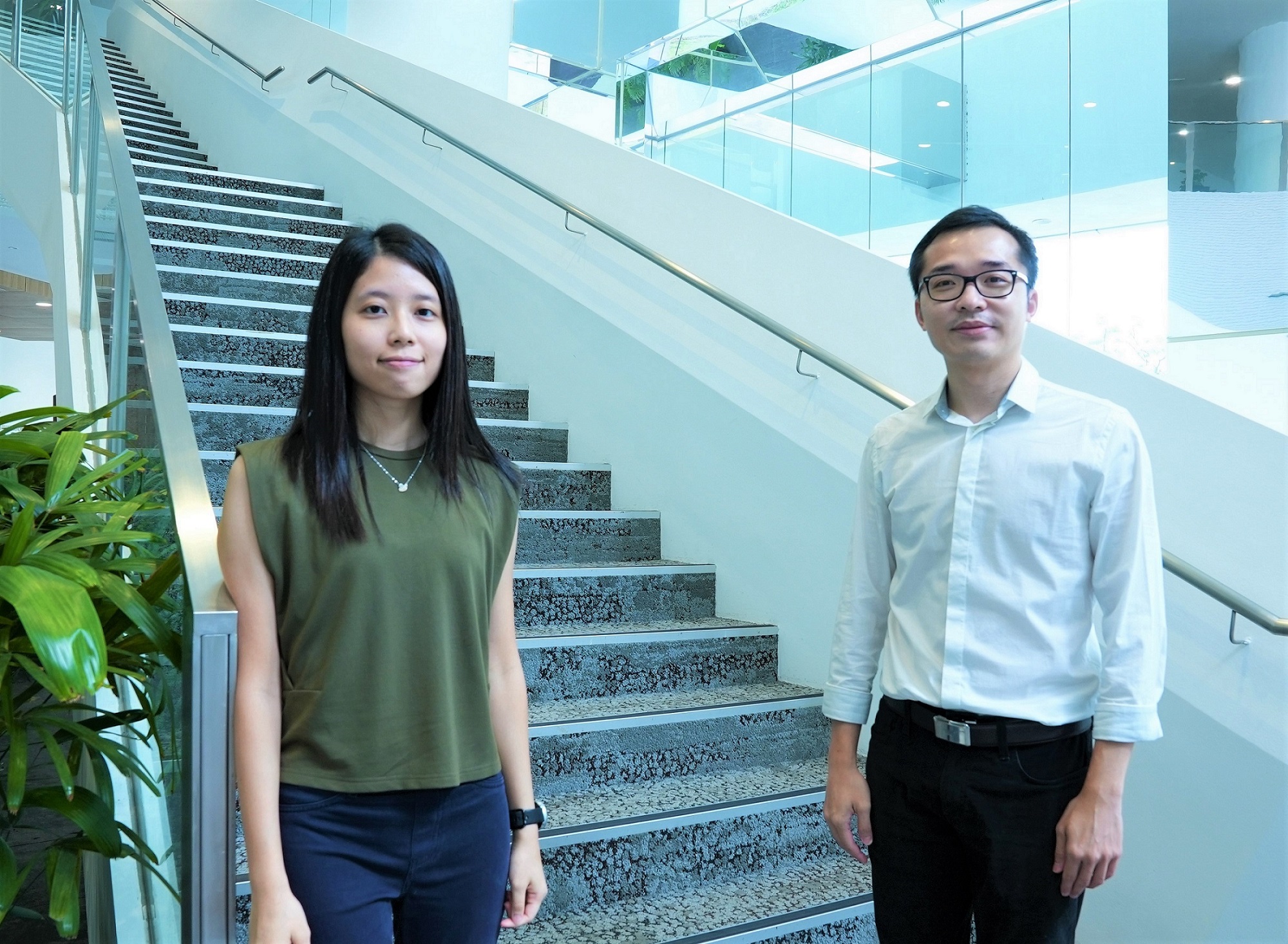
Senior Engineer Carmen Chia (left) and Deputy Head (Utilities Distribution) Staniel Lee (right).
By 2022, one in four camps will have solar panels installed, delivering about 20MWp of power – enough to power 5,000 four-room HDB households for one year. By 2025, two-thirds of the SAF’s camps will have solar panels generating about 50MWp of power in total, which would translate to the annual power usage of up to 12,500 four-room HDB households.
To reduce water and electricity consumption, our team also oversaw the implementation of over 300 smart meters across Jurong Camp, Paya Lebar Airbase and Changi Naval Base, as part of a pilot programme which is expected to be completed by 2023 before being rolled out to other camps and bases. The team harnessed technologies such as data analytics and visualisation to analyse consumption trends, as well as identify anomalies through the smart metering system.
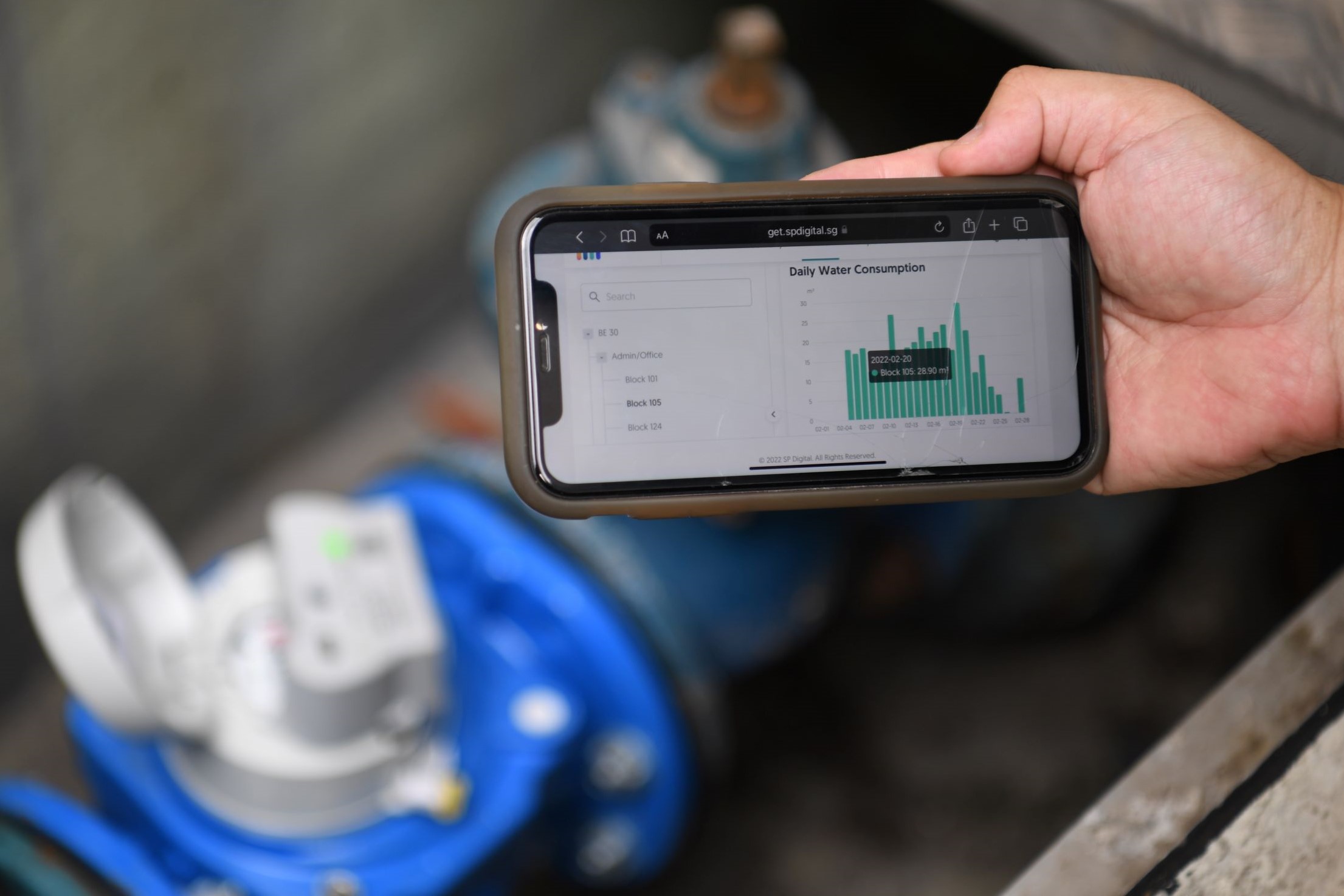
The smart metering system dashboard’s user interface is currently undergoing refinement through the pilot programme.
Deputy Head (Utilities Distribution) Staniel Lee explained that the data collected will be aggregated and presented on a user-friendly dashboard, so that commanders can view their unit’s consumption patterns in a single picture.
“We worked closely with the SAF to customise the system’s dashboard and tailored features to suit their needs, while ensuring that it is intuitive and user-friendly. With the information, commanders will have a better overview of their unit’s water and electricity consumption. This will enable them to take concrete steps to encourage responsible behaviour for greater sustainability,” he said.
Beyond these green initiatives, the team also adopted green solutions and tapped digital technologies where opportune and possible, to design sustainable solutions for MINDEF and the SAF while ensuring that operational requirements are met.
Head (Environmental Sustainability) Kuek Choon Han shared that DSTA aims to push engineering boundaries while being a responsible steward of the environment by focusing on initiatives that can help to reduce carbon emissions, water and waste. He explained that designing sustainable solutions for military infrastructure comes with unique challenges, as there is always a need to consider operational requirements which can differ greatly across facilities.
“In every project, green features are incorporated into facilities that are also designed to perform critical defence functions. Hence, there is a diverse range of building types, which can be challenging as there is no one-size-fits-all solution,” he said.
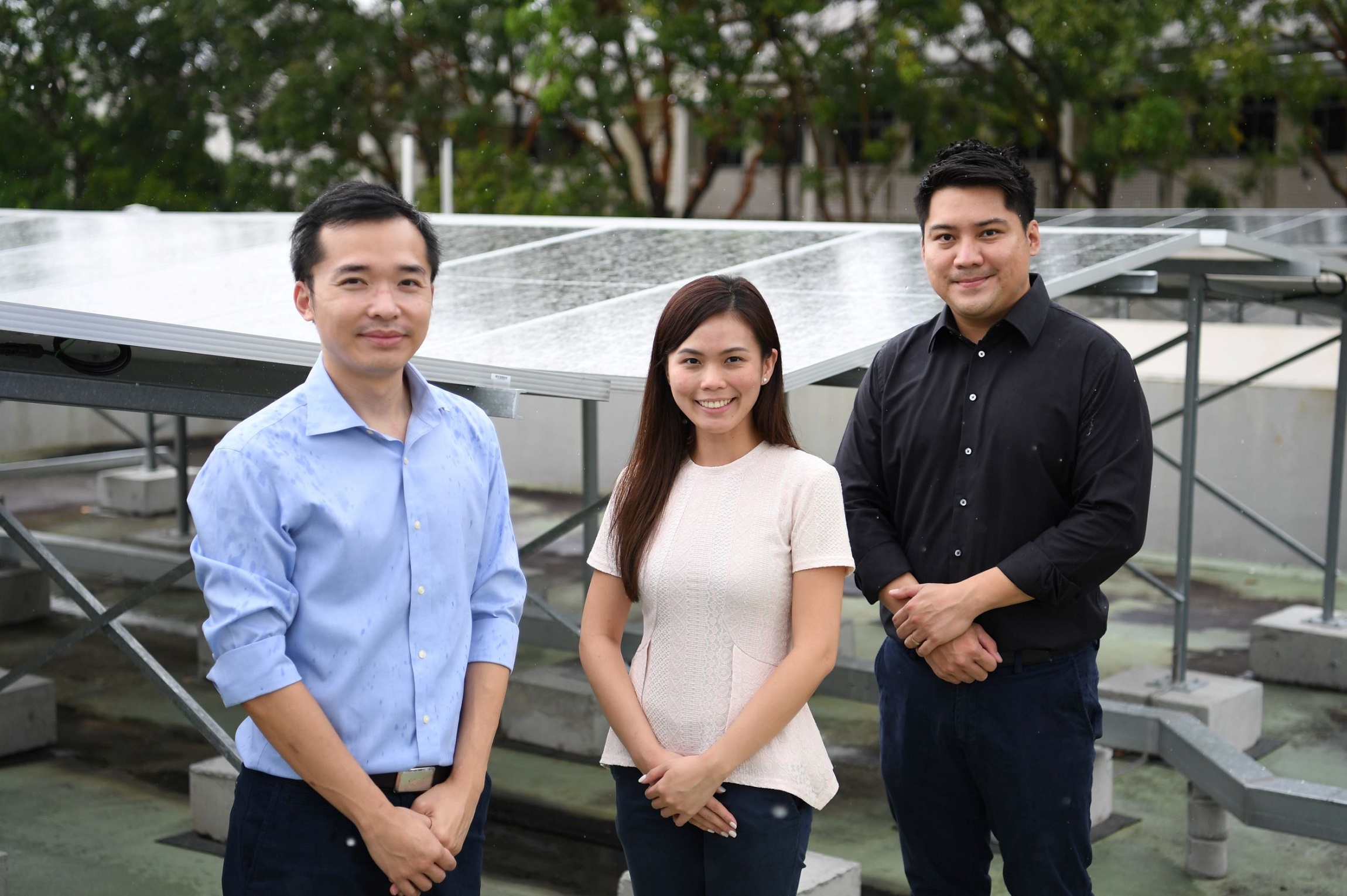
From left: Deputy Head (Utilities Distribution) Staniel Lee, Deputy Head (Sustainability Strategy) Jolene Chung and Head (Environmental Sustainability) Kuek Choon Han at the roof of a Jurong Camp building with solar panels installed.
Deputy Head (Sustainability Strategy) Jolene Chung added that DSTA has also looked into improving the sustainability performance of both existing and new buildings by implementing innovative green solutions.
“For instance, to reduce energy consumption, DSTA initiated an effort to replace major fluorescent light fittings with energy-efficient LED lights in all MINDEF buildings, achieving both manpower and cost-savings,” she said.
Our commitment to the environment has been recognised by the industry. We have attained the Building and Construction Authority’s Green Mark Champion Award in 2017, which marked a significant milestone in our sustainability journey, and also received a total of 20 Green Mark Awards.